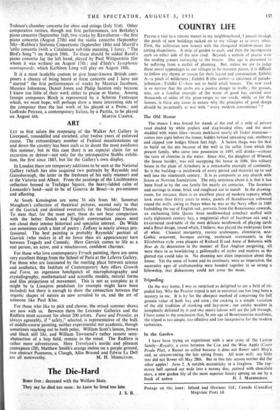The Old Manor
The manor I was bound for stands at the end of a mile of private road shaded by white poplars and stag-headed elms, and the moat studded with water lilies—moats necklaced nearly all Tudor niansions- comes into sight before the house, hidden behind spreading oak, mulberry and clipped yew hedges fifteen feet high. A Saxon thegn was the first to build on the site because of the well in the cellar from which the present family, who came into possession in 1495, still drinks—without the taste of chlorine in the water. Since Alsi, the daughter of Wlword, the Saxon builder, was still occupying the house in 1086, this solitary house in the plain of Aylesbury is a remarkable example of continuity. So is the building—a patchwork of every period and material up to and well into the nineteenth century. It is as composite as any church with Saxon or Norman foundations. The only sameness about it is that it has been lived in by the one family for nearly six centuries. The furniture and carvings in stone, brick and roughcast are to match. In the drawing- room, for instance, there is an excellent piece of modern tapestry which took more than thirty years to make, panels of Scandinavian softwood round the walls, owing to Pepys when he was at the Navy office in 1680 forbidding the use of English oak, portraits from the Renaissance onwards, an enchanting little Queen Anne needleworked armchair stuffed with early eighteenth century hay, a magisterial chair of Jacobean oak and a tri-cornered .card-table of the most delicate needlework of playing cards and a floral design, round which, I believe, was played the embryonic form of whist. Classical marquetry, rococo arabesques, chinoiserie, nee- Gothic ornament, baroque carving, exuberant overrnantels in the Elizabethan style, even plaques of Richard H and Anne of Bohemia with Fleur de /is decoration in the manner of East Anglian pargetting, all were there in as bewildering a gallimaufry of styles and motives as the glutted eye could take in. No planning nor alien.imposition about this house. Yet the sense of home and its continuity were so imperative, the successive ages of craftsmanship were bonded together in so strong a fellowship, that disharmony could not cross the moat.






























 Previous page
Previous page